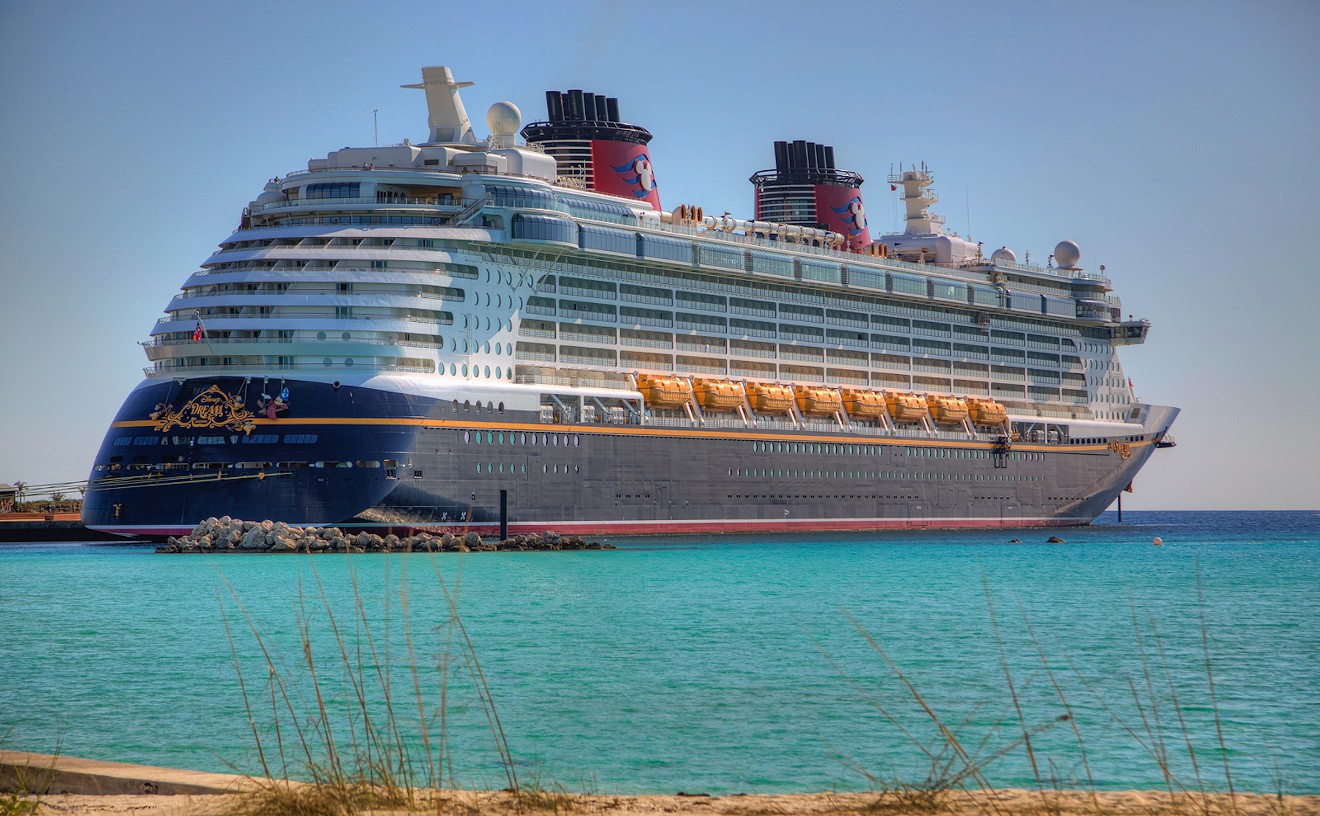"You've got to think of it as Moral Gables," jokes Richard Goihman, co-director of the gallery, as he explains the protective wrapper shielding from outside view the works by Moreno and other artists in the current exhibition of erotic art. "People in most places would think this was in perfectly good taste. But here it's different." While the show generally has been well received, the exhibition space has been the scene of several outspoken declarations of disapproval since the its opening January 7.
Goihman, who is 28 years old, and his 32-year-old partner, Genaro Ambrosino, point out that the gallery has become a kind of conceptual art piece in itself. The building's smut-house disguise, they say, can be seen as a comment on censorship and society's obsession with the obscene. Despite this intriguing result, it was not creative vision but rather the chilling effect of Coral Gables's restrictive climate that originally moved the dealers to black out the gallery. "Remember, this is the town where you have to paint your house a certain color," Goihman notes. "There are rules here. But you can work with the rules and use them to your favor."
It is the sworn duty of Coral Gables Mayor Raul Valdes-Fauli to uphold those rules. And it was the mayor himself, Ambrosino says, who warned him to take precautions before hanging the exhibition, titled "Erotica." Ambrosino, a client of attorney Valdes-Fauli before he took office in April 1993, told the mayor of his plans for the show some months ago. As the date drew near, Valdes-Fauli informally polled colleagues at city hall, according to the gallery owner. "Everybody agreed that we could do the show," recalls Ambrosino, "but they said we had to first cover the windows and put up a sign."
It's been a few years since the censorship crusades of the Reagan-Bush era gave national exposure to Andres Serrano's photograph of a Christ figure bathed in urine. Since then the late Robert Mapplethorpe has emerged from those censorship battles as a canonized artist who recently had an exhibition hall endowed in his name at New York City's Guggenheim Museum. Valdes-Fauli, a locally respected art collector, says he has opposed efforts to obstruct artistic expression. "Ambrosino is a private gallery, and he can have whatever he wants in it," the mayor notes. "I know what I like and what I don't like, but I don't think government should be telling them what they should and shouldn't do."
A little friendly advice, however, appears to be another matter. "I did warn [Ambrosino] that he should be sensitive to the neighbors' feelings," admits Valdes-Fauli, who has not found time to view the show and thus can't say whether he finds it offensive. Despite his fears, the artworks have not raised havoc with other business owners on the boulevard. "No, no problem with me," offers Jose Martinez-Canas, director of the Elite Gallery across the street, which has a view of Ambrosino. "I wouldn't mind being able to see that kind of art when I looked at their gallery."
Still, the city has had its share of sensitive residents. In 1979 one unidentified art-lover was so disturbed by an erotic photo show at the now defunct Exposures Gallery that he heaved a rock through the window. "My problem with Coral Gables is that it's run by extremely conservative white people who are offended by the fact that some artists express themselves in that manner," says Mario Algaze, director of Exposures at the time. "They asked me to take down the photographs and put them in the back room. That's a lot of horseshit." Algaze is dismayed, but not surprised, that things don't seem to have changed much. "I'm sorry [Ambrosino] covered their window. They should have stood their ground. Apparently they want to keep the devil, God, and everybody happy. You can't do that. You've got to take a stand. This is not porn, it's fine art."
Conceived as a "tour through the eroticism of Latin America," the exhibition's works range from Humberto Castro's poetic portrait of a couple making love (Origin of the World) to Magali Lara's delicate, botanical landscapes dripped down the canvas to Nelson Garrido's Santa Erotica, a manipulated photograph of a naked model decorated with Christmas lights and towering above a decadent panorama of fornicating Barbie and Ken dolls and a pig's head. (Garrido recently has been battling censorship, and the wrath of the Catholic Church, in his native Venezuela.)
The largest work in the gallery is Adalberto Delgado's Video Booth No. 2, a replica of a peep-show booth featuring a video edited from soft-porn flicks, music clips, and foreign films made for general audiences. "The point of the piece is to explore where we draw the line between what is erotic and what's pornographic," says Delgado, a Cuban-born Miami artist. "I've been trying to get people in this town to see the light for twenty years."
Perhaps even more provocative than Delgado's erotic video is Venezuelan artist Carlos Zerpa's imaginative sculpture made from a high-tech chair decorated with sado-masochistic equipment, with a large crucifix attached to the front. Upon viewing the work, one older Cuban man began a screaming tirade in Spanish that ended in the accusation that the gallery was trying to spread AIDS. (In fact, the exhibition, which closes Monday, January 31, has raised more than $15,000 for AIDS prevention and education from donations, sales, and a benefit performance event. The money is to be distributed by the Dade Community Foundation.)
Down the street from the Ambrosino Gallery, art dealer Fred Snitzer has been called to task by local citizens for the strong sexual and scatalogical imagery of some of the recently exiled Cuban artists whose work he shows. "All of this obsession with squirting and excreting is a symbolic expression of their exile anger, their displeasure with the Cuban government," explains Snitzer. "I've had some repercussions. My response was to say that at least we're in a country where we can do it. In a situation like this, people are confronted with their own repressive attitudes. If we told the artists we couldn't show the work, they might as well be back in Cuba."
"It's like Big Brother looking over your shoulder," adds Gables gallery owner Richard Arregui. "I've been in business here for four years and I could give you a list from A to Z of our battles with the city. Now you have to cover up your windows for an erotic exhibition. Get real."
Earlier this month Cuban-born artist Humberto Castro, who now lives in Paris, conceived a performance piece as part of the Ambrosino's AIDS benefit. A man and a woman posed as Adam and Eve, decorated with coiling snakes Castro had painted on their bodies. The woman was naked, but the man was asked by the gallery owners to cover up his private parts by donning underwear. Castro, who bitterly recalls the censorship and hypocrisy he and other artists endured in Cuba, agreed to compromise when it came to the male model but refused to cover the woman. "Here, in a way, it's like Cuba," he says. "One purpose of art is to broaden people's minds. If we can do it there, we can do it here, too.










